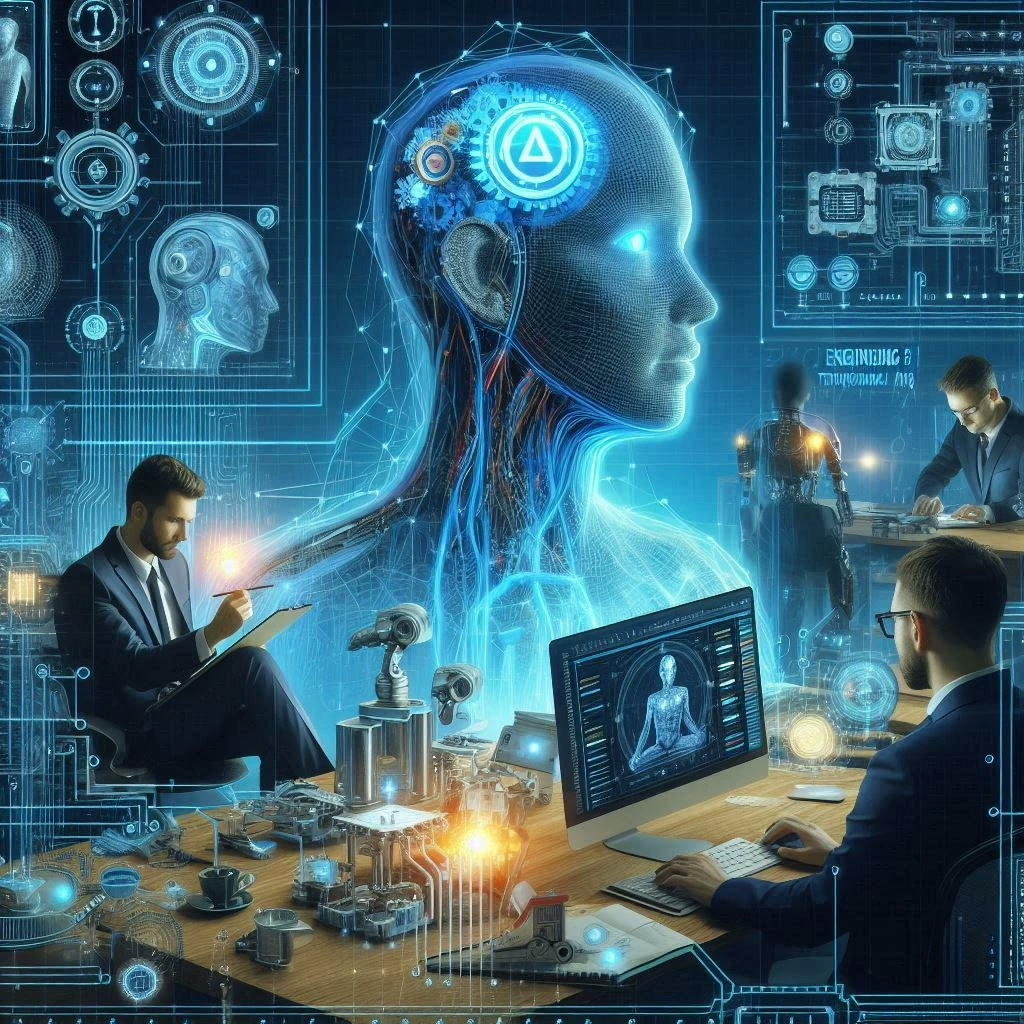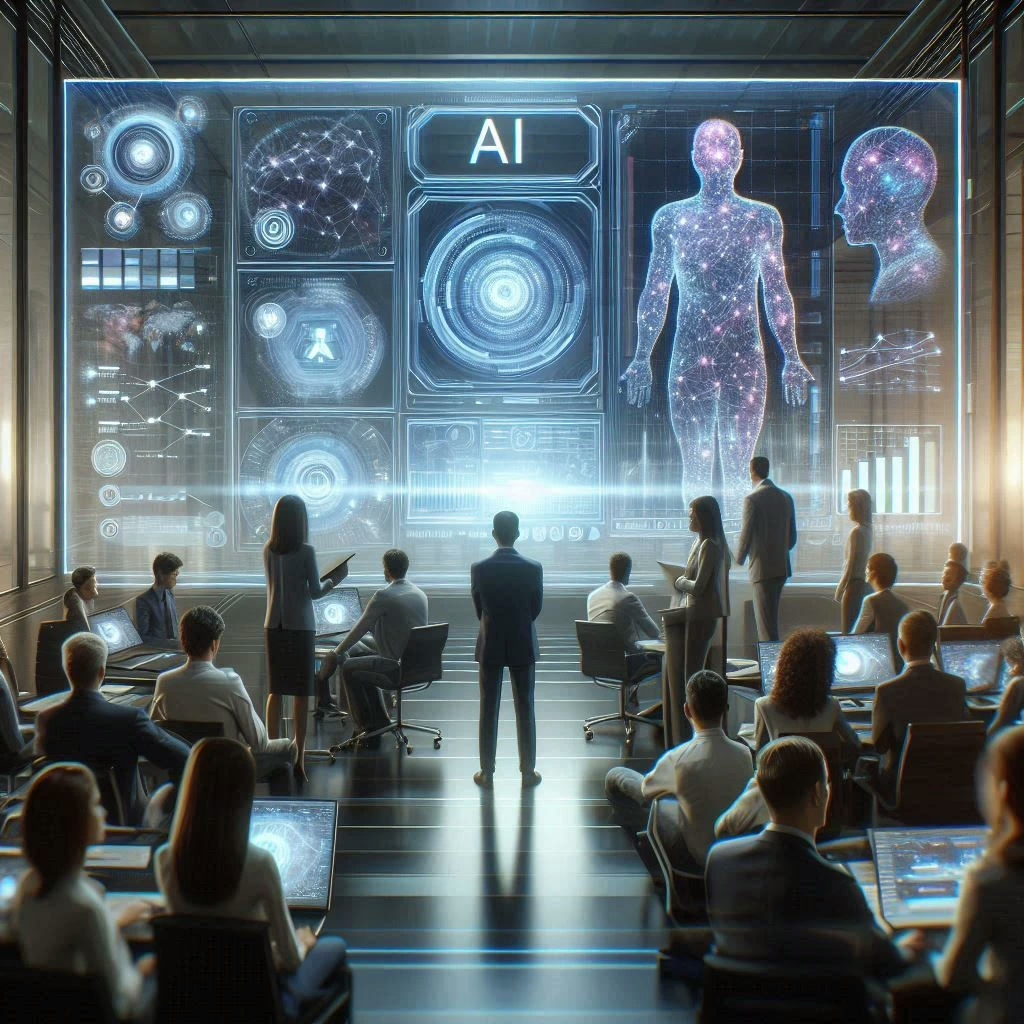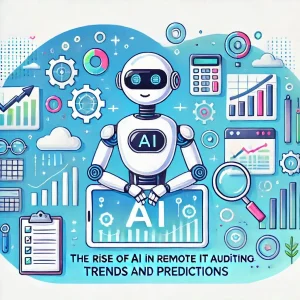Introduction
In the rapidly evolving field of artificial intelligence (AI), two distinct yet interconnected roles have emerged: AI prompt engineering and traditional AI development.
- Defining AI Prompt Engineering: AI prompt engineering is the specialized practice of designing and refining inputs, known as prompts, to optimize the behavior and output of generative AI models. This process involves crafting clear and specific instructions that guide AI systems to produce accurate, relevant, and high-quality results. It combines creativity with technical skill, making it both an art and a science [12][13].
- Defining Traditional AI Development: Traditional AI development encompasses a broader range of activities, including the design, training, and deployment of AI models. This role typically requires a strong foundation in programming, machine learning algorithms, and data science. Developers focus on building the underlying architecture of AI systems, ensuring they can learn from data and make predictions or decisions based on that learning.
- Relevance of the Comparison: As AI technology continues to advance at an unprecedented pace, understanding the differences and synergies between prompt engineering and traditional AI development is crucial for professionals in the field. The rise of generative AI has highlighted the importance of effective prompt design, which can significantly enhance the performance of AI systems. This comparison is particularly relevant as organizations seek to leverage AI for various applications, from automating tasks to enhancing creative processes [1][4][10].
- Objectives of the Blog Post: This blog post aims to explore the distinctions and overlaps between AI prompt engineering and traditional AI development. By examining the skills required for each role, the impact of prompt engineering on AI outputs, and the potential for collaboration between these two domains, we hope to provide valuable insights for AI professionals and technologists navigating this dynamic landscape. Ultimately, the goal is to foster a deeper understanding of how these roles can coexist and complement each other in driving innovation within the AI sector.
Objectives of the Blog Post: This blog post aims to explore the distinctions and overlaps between AI prompt engineering and traditional AI development. By examining the skills required for each role, the impact of prompt engineering on AI outputs, and the potential for collaboration between these two domains, we hope to provide valuable insights for AI professionals and technologists navigating this dynamic landscape. Ultimately, the goal is to foster a deeper understanding of how these roles can coexist and complement each other in driving innovation within the AI sector.
Understanding AI Prompt Engineering
AI prompt engineering has emerged as a vital discipline within the broader field of artificial intelligence, particularly as the demand for effective interaction with AI models grows. This section delves into the role of prompt engineering, the techniques employed, and the essential skills and tools required for success in this area.
Role of Prompt Engineering in AI Model Interaction
Prompt engineering serves as the bridge between human intent and AI model output. It involves crafting precise and effective instructions, or “prompts,” that guide AI systems to produce desired results. This role is crucial because well-structured prompts can significantly enhance the relevance and accuracy of the AI’s responses, leading to more meaningful interactions. Conversely, poorly designed prompts may yield irrelevant or unhelpful data, underscoring the importance of this discipline in AI development [3][9].
Techniques Used in Prompt Engineering
Several techniques are employed in prompt engineering to optimize AI interactions:
- Prompt Design: This involves creating structured prompts that clearly convey the user’s intent. Effective prompt design considers the context and specificity required to elicit the best possible output from the AI model [5][13].
- Tuning: This technique refers to the iterative process of refining prompts based on the AI’s responses. By analyzing the output, prompt engineers can adjust their prompts to improve clarity and relevance, ensuring that the AI aligns more closely with user expectations [8][15].
- Testing: Rigorous testing of prompts is essential to evaluate their effectiveness. This may involve A/B testing different prompts to determine which yields the best results, thereby enhancing the overall quality of AI interactions [6][13].
Skills and Tools Required for Effective Prompt Engineering
Professionals need a specific set of skills and tools:
- Analytical Skills: The ability to analyze AI outputs critically is crucial for refining prompts and understanding how different inputs affect results [7][15].
- Technical Proficiency: Familiarity with AI models, particularly large language models (LLMs), is essential. Understanding how these models interpret prompts allows engineers to craft more effective instructions [4][15].
- Creativity: Crafting innovative prompts that can elicit diverse responses from AI requires a creative mindset. This creativity is vital for exploring the full potential of AI capabilities [7][13].
- Tools: Proficiency in various AI development tools and platforms, such as Azure AI and other machine learning frameworks, is beneficial. These tools often provide functionalities that assist in prompt testing and optimization [10][15].
Overview of Traditional AI Development
Traditional AI development encompasses a range of roles and processes that are foundational to the field of artificial intelligence. This section aims to clarify the key components of traditional AI development, highlighting its significance in the broader context of AI technologies.
Definition of Traditional AI Development Roles
- Data Scientists: These professionals analyze and interpret complex data to help organizations make informed decisions. They utilize statistical methods and machine learning techniques to extract insights from data, often focusing on data cleaning, exploration, and visualization.
- Machine Learning Engineers: This role involves designing and implementing machine learning models. Machine learning engineers are responsible for building algorithms that can learn from and make predictions based on data. They often work closely with data scientists to deploy models into production environments.
- AI Researchers: Researchers in AI focus on advancing the theoretical foundations of artificial intelligence. They explore new algorithms, techniques, and methodologies to improve AI systems. Their work often involves publishing findings in academic journals and contributing to the scientific community.
Typical Processes in Traditional AI Development
- Data Collection: The first step in traditional AI development is gathering relevant data. This can involve sourcing data from various platforms, databases, or through user-generated content. The quality and quantity of data collected are crucial for the success of AI models.
- Model Training: Once data is collected, it is used to train machine learning models. This process involves selecting appropriate algorithms, tuning hyperparameters, and using training datasets to teach the model to recognize patterns and make predictions.
- Evaluation: After training, models undergo rigorous evaluation to assess their performance. This includes testing the model on unseen data to ensure it generalizes well and does not overfit to the training data. Metrics such as accuracy, precision, recall, and F1 score are commonly used to measure performance.
Skills and Technologies in Traditional AI Development
- Programming Languages: Proficiency in programming languages such as Python, R, and Java is essential for AI professionals. Python, in particular, is favored for its extensive libraries and frameworks like TensorFlow, PyTorch, and Scikit-learn.
- Statistical Analysis: A strong foundation in statistics is critical for understanding data distributions, hypothesis testing, and model evaluation. Data scientists and machine learning engineers often employ statistical techniques to derive insights from data.
- Machine Learning Frameworks: Familiarity with machine learning frameworks and tools is vital. These include libraries for building and training models, as well as tools for data manipulation and visualization.
- Cloud Computing: As AI projects often require significant computational resources, knowledge of cloud platforms (e.g., AWS, Google Cloud, Azure) is increasingly important for deploying and scaling AI solutions.
Comparative Analysis: Key Differences
The emergence of prompt engineering has introduced a new dimension to AI development. This section outlines the fundamental differences between prompt engineering and traditional AI development, focusing on their distinct roles, skill sets, and project dynamics.
Focus Areas: Interaction vs. Model Architecture
- Prompt Engineering: The primary focus of prompt engineering is on the interaction between users and AI models. Prompt engineers craft specific inputs or prompts that guide AI systems to produce desired outputs. This role emphasizes understanding user needs and effectively communicating with AI through natural language, ensuring that the AI responds meaningfully to user queries [2][4].
- Traditional AI Development: In contrast, traditional AI development centers around the architecture and functionality of AI models. Developers in this space are concerned with building and optimizing algorithms, data structures, and the underlying code that powers AI systems. Their work involves a deep understanding of machine learning principles, model training, and performance tuning [10][13].
Skill Sets: Creative Problem-Solving vs. Technical Expertise
- Prompt Engineers: The skill set required for prompt engineering leans heavily towards creative problem-solving. Professionals in this role must be adept at formulating effective prompts that can elicit high-quality responses from AI systems. This involves a nuanced understanding of language, context, and user intent, as well as the ability to experiment with different phrasing and structures to achieve optimal results [3][11].
- Traditional AI Developers: On the other hand, traditional AI developers require strong technical expertise. Their skill set includes proficiency in programming languages, knowledge of machine learning frameworks, and the ability to work with complex data sets. They are tasked with implementing algorithms and ensuring that AI systems are robust, scalable, and capable of handling real-world applications [8][10].
Project Timelines and Deliverables
- Prompt Engineering Projects: Projects in prompt engineering tend to have shorter timelines, as they often focus on refining inputs and iterating on user interactions. The deliverables are typically centered around the effectiveness of prompts and the quality of AI responses, which can be rapidly tested and adjusted based on user feedback [14][15].
- Traditional AI Development Projects: In contrast, traditional AI development projects usually involve longer timelines due to the complexity of building and training models. Deliverables in this domain include fully functional AI systems, comprehensive documentation, and performance metrics that demonstrate the model’s capabilities. The development lifecycle is more extensive, often requiring multiple phases of testing and validation before deployment [13][14].
Comparative Analysis: Synergies and Overlaps
This section delves into how prompt engineering and traditional AI development can complement each other, highlighting scenarios where they enhance one another, opportunities for interdisciplinary collaboration, and real-world examples of successful integration.
Scenarios Where Prompt Engineering Enhances Traditional AI Models
- Improved Model Performance: Prompt engineering plays a crucial role in optimizing the performance of traditional AI models. By crafting effective prompts, AI prompt engineers can guide models to produce more accurate and relevant outputs. For instance, in natural language processing tasks, well-structured prompts can significantly improve the quality of generated text, making it more coherent and contextually appropriate [6][9].
- Task-Specific Customization: Traditional AI models often require fine-tuning to perform specific tasks effectively. Prompt engineering allows for the customization of these models without extensive retraining. By simply adjusting the prompts, engineers can adapt models to new applications, such as customer service chatbots or content generation tools, thereby saving time and resources [4][14].
Interdisciplinary Collaboration Opportunities
- Cross-Functional Teams: The integration of prompt engineering into traditional AI development encourages collaboration between AI specialists, data scientists, and domain experts. This interdisciplinary approach fosters innovation, as team members bring diverse perspectives and expertise to the table. For example, a team working on a healthcare AI application might include medical professionals who can provide insights into the specific language and context needed for effective prompts [2][8].
- Shared Knowledge and Skills: As prompt engineering becomes more prominent, traditional AI developers can benefit from learning prompt crafting techniques. Conversely, prompt engineers can gain a deeper understanding of the underlying AI models, leading to more effective prompt designs. This mutual exchange of knowledge enhances the overall skill set of both groups, promoting a more holistic approach to AI development [3][13].
Case Studies of Successful Collaboration
- AI Chatbots in Customer Service: A notable example of synergy between prompt engineering and traditional AI development is seen in the deployment of AI chatbots. Companies have successfully combined the expertise of prompt engineers with traditional AI developers to create chatbots that not only understand user queries but also respond in a human-like manner. By leveraging effective prompts, these chatbots can handle a wide range of customer inquiries, improving user satisfaction and operational efficiency [14].
- Content Generation Tools: In the realm of content creation, traditional AI models have been enhanced through prompt engineering. For instance, a project aimed at generating marketing copy involved collaboration between AI developers and prompt engineers. The prompt engineers crafted specific prompts that guided the AI to produce tailored content, resulting in higher engagement rates and better alignment with brand messaging [5][11].
Career Opportunities in AI Prompt Engineering
The field of artificial intelligence (AI) is rapidly evolving, and with it, the emergence of specialized roles such as AI prompt engineering is reshaping the job market. This section explores the growing demand for prompt engineers, potential career paths, and tips for transitioning from traditional AI roles to this innovative domain.
Growing Demand for Prompt Engineers
- Integration Across Industries: As AI technologies become more integrated into various sectors, the need for prompt engineers is surging. These professionals play a crucial role in optimizing interactions between humans and AI systems, particularly in applications involving large language models (LLMs) like ChatGPT. Their expertise ensures that AI outputs are meaningful and aligned with user intent, making them invaluable in industries such as customer service, healthcare, and finance [1][10].
- Bridging Human-AI Interaction: Prompt engineers are essential in designing prompts that guide AI models to produce accurate and relevant responses. This role is increasingly recognized as critical in enhancing user experience and operational efficiency, leading to a heightened demand for skilled professionals in this area [1][9].
Potential Career Paths and Advancement Opportunities
- Diverse Roles: Career paths in prompt engineering can vary widely, from AI prompt engineers who focus on training models to AI interaction designers who combine design principles with prompt development. This diversity allows professionals to find niches that align with their skills and interests [12][14].
- Advancement Potential: As the field matures, there are significant opportunities for advancement. Professionals can progress to senior roles, such as AI product managers or lead prompt engineers, where they can influence broader AI strategies and implementations. Additionally, the skills acquired in prompt engineering can be transferable to other AI roles, enhancing overall career mobility [4][10].
Tips for Transitioning from Traditional AI Roles to Prompt Engineering
- Leverage Existing Skills: Professionals with backgrounds in traditional AI roles, such as data scientists or software developers, can leverage their existing skills in programming and data analysis to transition into prompt engineering. Understanding AI models and their functionalities is a significant advantage [12][15].
- Focus on Communication: Since prompt engineering involves crafting effective prompts that communicate user intent to AI systems, honing communication skills is essential. Professionals should practice writing clear and concise prompts that lead to desired AI outputs [11][13].
- Continuous Learning: The field of AI is dynamic, and staying updated with the latest advancements in AI technologies and prompt engineering techniques is crucial. Engaging in online courses, workshops, and community discussions can provide valuable insights and enhance expertise in this emerging area [4][8].
Future Trends in AI Development
The landscape of artificial intelligence (AI) is rapidly evolving, particularly with the emergence of prompt engineering as a distinct role within the field. This section explores the evolution of AI technologies, the implications for both prompt engineering and traditional AI development roles, the potential for automation, and the future skills that will be essential in these domains.
Evolution of AI Technologies
AI technologies have undergone significant transformations over the past few years, leading to the rise of prompt engineering as a critical function. Unlike traditional AI development, which often focuses on building algorithms and models from the ground up, prompt engineering emphasizes optimizing the interaction between users and AI systems through well-crafted prompts. This shift highlights the importance of context in AI interactions, as providing clear and relevant prompts can lead to more accurate and useful responses from AI models [1][8].
As AI continues to advance, the integration of generative design and adaptive prompting techniques is becoming more prevalent. These innovations allow AI systems to generate responses that are not only contextually relevant but also tailored to user needs, thereby enhancing user experience and engagement [3][7]. This evolution signifies a growing synergy between traditional AI development and prompt engineering, as both roles will increasingly rely on each other to create effective AI solutions.
Potential for Automation
The future of AI roles is also marked by the potential for automation. As AI technologies mature, many aspects of traditional AI development may become automated, leading to a shift in job functions. For instance, tasks such as data preprocessing, model training, and even some aspects of prompt crafting may be streamlined through automated tools [2][5].
However, while automation may reduce the demand for certain traditional AI roles, it simultaneously creates opportunities for prompt engineers. The need for professionals who can design intuitive prompts and user interfaces will likely increase, as organizations seek to leverage AI for customer service automation and other applications [9][10]. This dual impact of automation suggests that while some traditional roles may diminish, new roles focused on enhancing AI-human interaction will emerge.
Future Skills and Knowledge Areas
As the field of AI continues to evolve, the skills and knowledge required for both prompt engineering and traditional AI development will also change. Key areas of focus for future professionals in these domains will include:
- Understanding of AI Models: A deep comprehension of how various AI models function will be crucial for both prompt engineers and traditional developers. This knowledge will enable professionals to create more effective prompts and optimize model performance [4][11].
- User Experience Design: As AI systems become more user-centric, skills in user experience (UX) design will be increasingly important. Prompt engineers will need to craft prompts that are not only effective but also user-friendly, while traditional developers may need to integrate UX principles into their AI solutions [4][12].
- Adaptive Techniques: Familiarity with adaptive prompting and other emerging techniques will be essential for prompt engineers. Understanding how to adjust prompts based on user input will enhance the responsiveness and relevance of AI interactions [7][13].
- Collaboration Skills: As the lines between traditional AI development and prompt engineering blur, professionals will need to collaborate effectively across disciplines. This will require strong communication skills and an ability to work in interdisciplinary teams [6][14].
Conclusion
In the rapidly evolving landscape of artificial intelligence, understanding the distinctions and interconnections between AI prompt engineering and traditional AI development is crucial for professionals in the field. Here are the key insights that highlight these differences and synergies:
- Differences in Focus: Traditional AI development primarily revolves around writing code and building algorithms that enable machines to perform specific tasks. In contrast, prompt engineering emphasizes crafting precise and well-structured natural language inputs to guide AI models toward generating desired outputs. This shift from coding to communication reflects a broader trend in AI, where the ability to interact effectively with generative models is becoming increasingly important [6][7].
- Complementary Roles: While traditional AI developers lay the groundwork with their coding expertise, prompt engineers unlock the potential of AI systems through their understanding of language and context. The two roles are not mutually exclusive; rather, they complement each other. Insights gained from prompt engineering can inform and enhance traditional development practices, leading to more effective AI applications [3][15].
- Synergy in Advancing AI: The collaboration between prompt engineering and traditional AI development is paving the way for more specialized and context-aware AI systems. This synergy is essential for meeting the growing demands of various industries, as it allows for the creation of AI tools that are not only powerful but also user-friendly and adaptable to specific needs [4][5].
As AI professionals reflect on their career paths, it is essential to consider the implications of these roles. The rise of prompt engineering signifies a shift in the skill sets required in the AI domain. Professionals may find opportunities to expand their expertise by incorporating prompt engineering techniques into their repertoire, thereby enhancing their ability to work with generative AI models.
In conclusion, both AI prompt engineering and traditional AI development play vital roles in advancing AI technology. As the field continues to evolve, embracing the strengths of both disciplines will be key to unlocking the full potential of artificial intelligence. By understanding and integrating these roles, AI professionals can position themselves at the forefront of innovation in this dynamic landscape [2][8][9].
Find out more about Shaun Stoltz https://www.shaunstoltz.com/about/
This post was written by an AI and reviewed/edited by a human.



